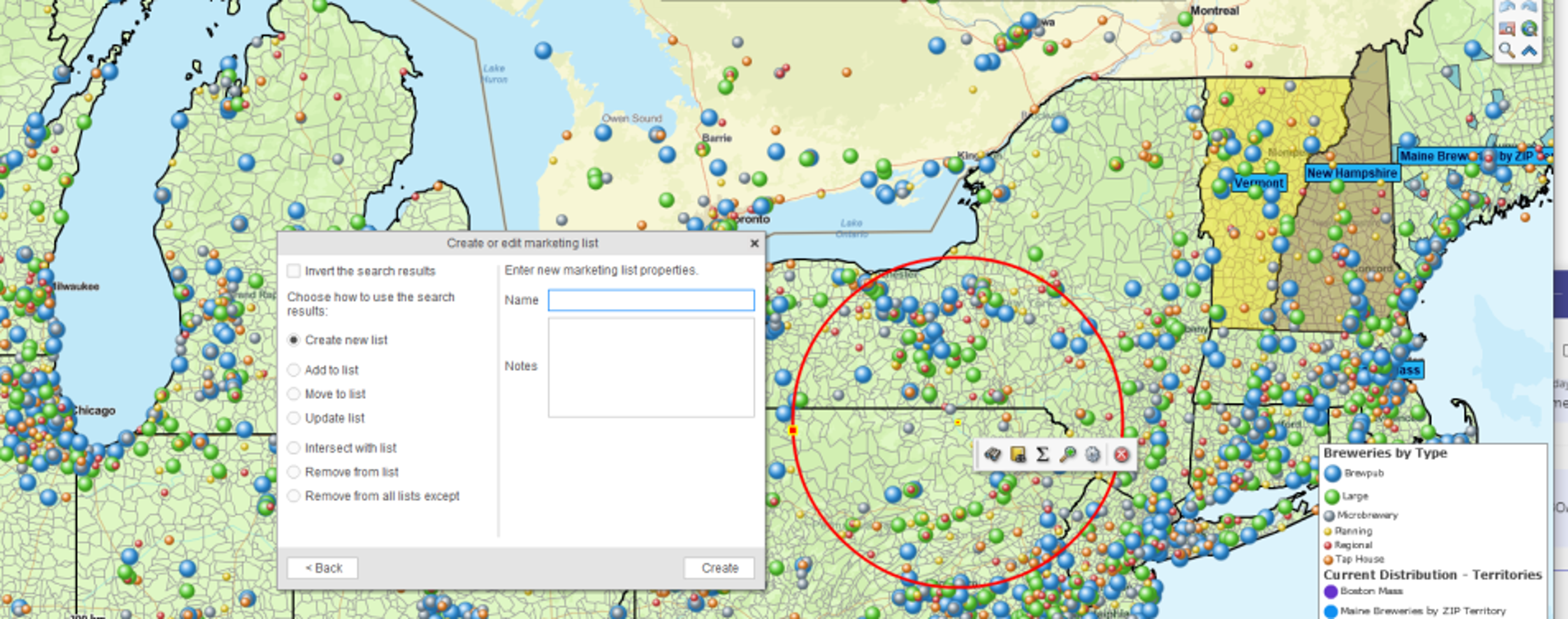The Power of the Radius Search

The radius search, a simple circular sweep of user business data, returns records within a circle. A spatial search using a polygon instead of a circle will provide similar results.
Building on Business Intelligence
Radius search, sometimes referred to as radius maps, can help your business grow by revealing the golden opportunities that lie within your market areas. Any organization can use a web map to plot field data points that represent critical business locations – a process commonly referred to as geocoding. These critical data points might be field resources, retail sales locations, sales (by address, zip code or county), competitor locations, or prospect addresses. This basic data visualization tool reveals exactly where on the planet your business takes place or where key business resources are located. Radius search takes that geocoded visualization a step further. Radius search lets the user draw a circle around a center point at a user defined distance or radius. Then the mapping application creates a subset database of only those records from the original dataset that exist within that circle. Now export that new subset data to Excel and use your new found business intelligence in further analysis, for communications, or planning.
Location Awareness
Sounds simple enough, right? Now, you may ask, what can I do with the radius search data results? Good question. There are many applications for your burgeoning location awareness program. Radius search data results are commonly used for sales planning, event planning, marketing campaigns, business expansions, and competitive analysis.
- A sales person conducts a radius search query to identify customers she may want to visit or notify during a sales trip.
- A marketing manager and event planner uses radius query results to target email or mail campaigns to customers and prospects based on geographic location.
- A non-profit fund raiser might use radius search to identify donors or potential donors in a metro area for follow-up or progress notifications.
- A hospital system, planning a major new expansion, could use radius search to expose all the health related businesses in a metro region.
- A large retail chain analyzes their competitors by conducting a radius search of purchased retail sales data imported into a web map application.
Web maps abound and at affordable prices, and some of them offer a radius search tool for your convenience. Now there’s no excuse when your ship gets threatened by a competitive torpedo. Radius search is just one of the many features making business mapping technology the savvy business manager’s tool for a location aware, competitive edge.



